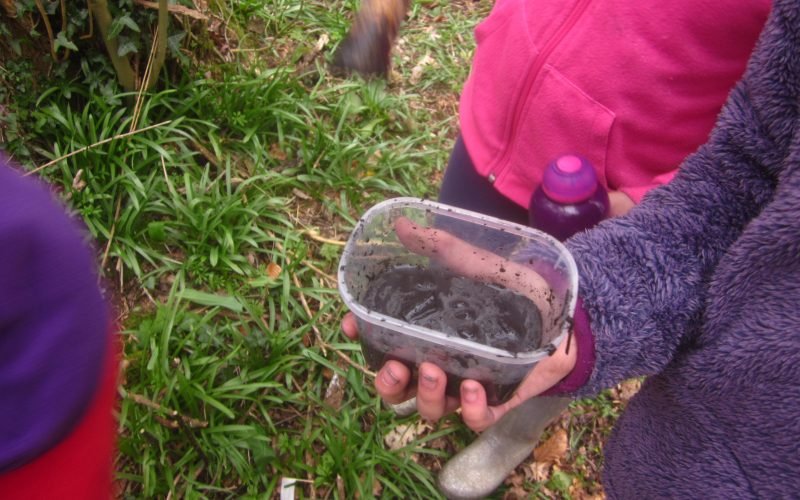What emerges when we think with the liveliness of charcoal?
Shared by Helen Clarke and Sharon Witt
What emerges when we think with the liveliness of charcoal? Four nine-year-old girls are fascinated with a black circle on the woodland floor that reveals charred remains of branches. They investigate – poke, smear, crush, smudge, stir and paint – in exploration, curiosity and novelty. In this lively story (Blaise et al., 2016), children play with powdery, sticky, blackness; they make marks and are marked. ‘Charcoal … announces its presence and compels a response’ (Pacini-Ketchabaw et al., 2017, p. 6). Dusty, sludgy darkness spreads. Charcoalness generates. Skin, clothes and thoughts carry traces of wood-fire-black-burning-odour. Boundaries of carbon, skin and trees blur. Stories of happenings – growth, clearance, management, combustion, release, remains, recovery – explored by new hands in elemental stories of earth and water, heat and air, interactions and change. In times of carbon crisis, what might be co-created by thinking with dynamic processes of formation, destruction and renewal? How might such encounters with charcoal situate hopes for new educational practices in the Anthropocene?
References
Blaise, M., Hamm, C. and Iorio, J.M. (2016). Modest witness(ing) and lively stories: paying attention to matters of concern in early childhood. Pedagogy, Culture and Society, 25 (1), 31-42.
Pacini-Ketchabaw, V., Kind, S. and Kocher, L.M. (2017). Encounters with materials in early childhood. New York: Routledge

